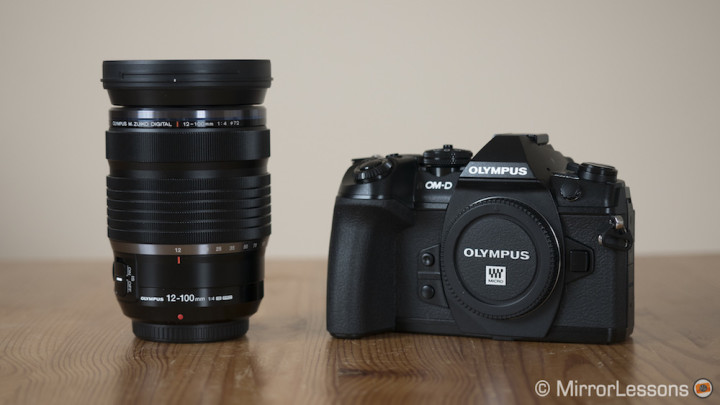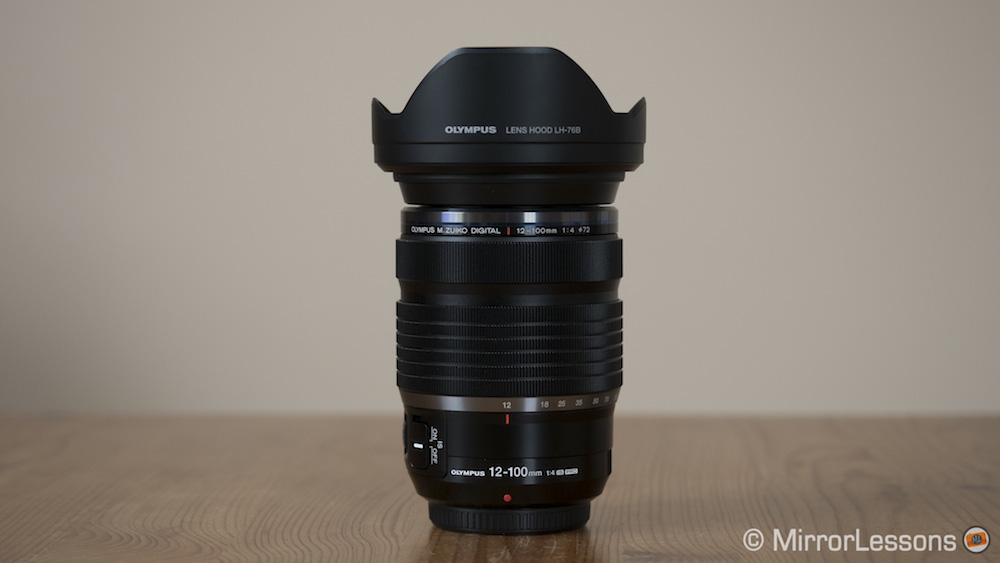The sixth addition to Olympus’ PRO range of lenses is the M.Zuiko 12-100mm f/4. With its versatile focal range and constant f/4 aperture, it is the perfect choice for those who enjoy photographing a wide variety of genres, from landscapes to portraits to street. For the same reason, it is also an ideal travel zoom.
Like the M.Zuiko 25mm f/1.2 PRO which we reviewed last week, we had the chance to test the 12-100mm for a month on the E-M1 and E-M1 II during our Christmas vacation in Italy and France. All our findings have been summarised in the video review posted below.

Main specifications
- Focal length: 12-100mm (24-200mm in 35mm terms)
- Lens configuration: 17 elements in 11 groups with 1 HR, 2 Super HR, 3 Aspherical glass, 1 DSA lens, and 5 ED lens elements
- Angle of view: 84 ‑ 12°
- Closest focusing distance: 15cm at 12mm, 45cm at 100mm
- Maximum image magnification: 0.3x
- Aperture blades: 7 circular aperture blades
- Aperture range: 4 to 22
- Coating: ZERO (Zuiko Extra-low Reflection Optical) coating
- Filter diamater: 72mm
- Weather sealing: Yes
- Optical stabilisation: Yes (Sync IS)
- Dimensions: 77.5mm Ø, 116.5mm
- Weight: 561g
Video review
Below you can watch our video review of the M.Zuiko 12-100mm f/4 PRO. It contains all the most important information about the lens, including the design, build quality, optical quality, autofocus performance, and some extra considerations.
Table of contents:
- 0:40 – Design and build quality
- 1:48 – Optical quality
- 4:12 – Autofocus / Manual Focus
- 4:44 – Optical Stabilisation
- 6:13 – Conclusion
Summary of our findings
- solid weatherproof build allows you to use the lens in any conditions when paired with a splash, dust and freeze-proof Micro Four Thirds body like the E-M1 II
- zooming is external, so the inner barrel extends quite a lot when you turn the focus ring towards the telephoto end
- excellent sharpness through the zoom and aperture range with the exception of the slowest apertures where diffraction is pronounced (the best results are found between f/4 and f/5.6)
- though not a portrait lens, the 12-100mm is capable of producing a pleasant bokeh at the fastest apertures and longest focal lengths
- minimum focus distance of 15cm at 12mm is excellent, but it isn’t very practical because the front element almost touches the subject and can cast a shadow
- it is one of only two M.Zuiko lenses along with the 300mm f/4 PRO (review here) to feature optical stabilisation and it does an astounding job at all focal lengths (5 and 10 second shots are fairly easy to achieve on the E-M1 II)
- on the non-stabilised Panasonic Lumix GF5, the slowest shutter speed we managed was 4 seconds, which is still incredible for optical stabilisation
Our Verdict

There is very little to criticise about the M.Zuiko 12-100mm f/4, at least in terms of optical quality and performance.
The only caveat is that it is too large and heavy to be used comfortably on smaller Micro Four Thirds bodies such as those from the Olympus Pen or Panasonic GF/mid-range GX line-ups, but it was designed to be used on more professional bodies such as the OM-D range anyway.
I could also mention the price, which was around $1300 at the time of its release, but it is justified by the solid weatherproof build, superior optical quality, flexible zoom range, constant aperture, fast and silent autofocusing, and impressive optical stabilisation. Were I to choose one all-purpose zoom for the system, this would most certainly be it.
Sample Images













